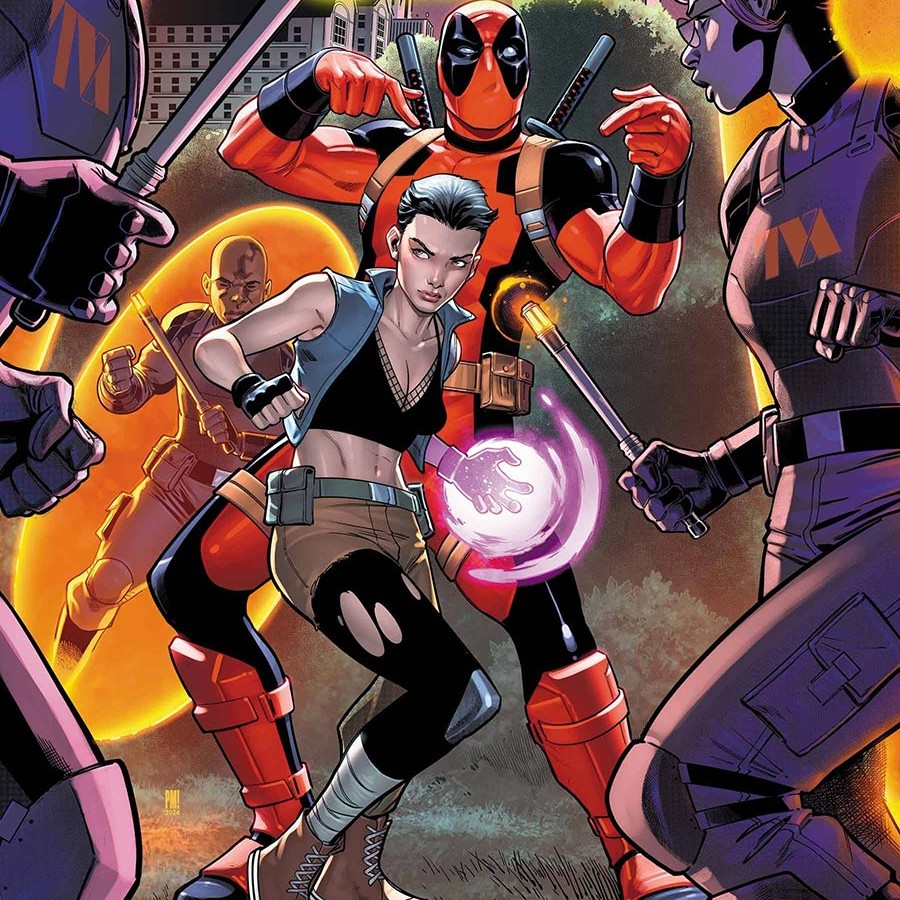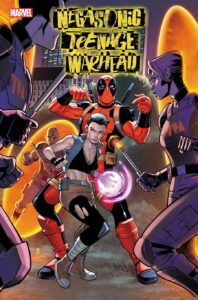
 Ellie Phimister must find the girlfriend she doesn’t know exists and kiss her within one hour to prevent apocalypse (not THAT one) in Negasonic Teenage Warhead #1.
Ellie Phimister must find the girlfriend she doesn’t know exists and kiss her within one hour to prevent apocalypse (not THAT one) in Negasonic Teenage Warhead #1.
Collecting the entire Marvel’s Voices Infinity Comic story, Negasonic Teenage Warhead #1 shines a spotlight on its titular character, who is perhaps now best known as a supporting character in the Deadpool films. Although that version of the character is quite different from her original depiction in Grant Morrison and Frank Quitely’s New X-Men, she was reintroduced in 2016 to more closely resemble her cinematic counterpart. Negasonic has been an interesting case study in what is derisively referred to as “MCU synergy” among comic fans, wherein a character of some obscurity is picked to appear in live action media, adapted to varying levels of fidelity to the source material, and then re-adapted back in the comics with that version in mind. While some may hate this as a concept, I actually enjoy seeing this process play out; I’m always interested in seeing how things are adapted in other media. But I got into comics as an adult and therefore nothing is sacred to me, so that’s just my perspective.
In any event, Negasonic Teenage Warhead #1 is quite an enjoyable read, following Ellie in a high stakes plot of apocalyptic proportions. When Ellie is apprehended by the TVA for timey-wimey multiverse reasons, it’s up to her to find a girl she’s never heard of and kiss her to prevent certain doom. Someone’s lesbianism being exploited as a key to saving the universe… I can already see the angry YouTube thumbnails.
Written by Andrew Wheeler, recently of Sins of the Black Flamingo, this one-shot is very gay. Not just in representational terms, but also in his depiction of female superheroes, presenting a team of characters I can only refer to as a yassified Girluminati. And while the plot does make a point of Ellie being gay for dramatic purposes, as alluded to in the intro above, it’s only part of the story. Ellie is a very interesting character — a mutant who died via genocide on Genosha who then returned to life and lived on Krakoa, a similar utopian island. She’s more defined by her regret and sorrow than being a lesbian, but both are equally as important here. Despite what some would tell you, it doesn’t have to be an either/or situation! Wheeler also delves into the nature of her powers and how she picked up her other abilities aside from being a precog; I don’t know if they’re “new” to this story, but the explanation is new to me. Sometimes “MCU synergy” just makes a character more interesting than they were before!
Drawn by Eleonora Carlini & Carola Borelli, the visual style of Negasonic Teenage Warhead #1 is very frenetic and action-packed, which really proves how beneficial her extra powers are in the genre of superhero fiction. Their styles mostly gel well together and aren’t too jarring when they change throughout the issue, which is often a concern for books with multiple artists on hand. If I’ve got any critique about the art, it’s easy to tell in some spots that this was adapted from a vertical-based web comic, with mildly awkward uses of negative space between panels, but that’s more a nitpicky than anything and reflective of my overall stance on the Infinity Comic format and how Marvel uses it. (i.e. isn’t it funny how it seems like all of their queer characters now get relegated to the paygated, mostly non-print publishing arm?)
But if you’re in the mood for a light superhero romp with some yassified queerness, then Negasonic Teenage Warhead #1 is well-worth the price of admission.




